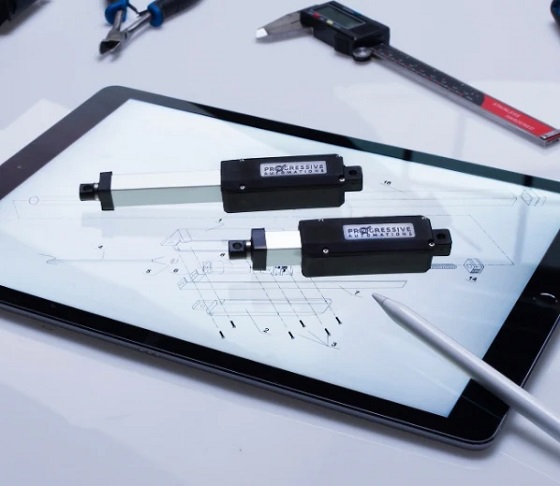Also Interesting
NFL Odds Seeing More Action as North American Football Expands

Super Bowl LVII wrapped up the 2022-23 NFL season on February 12th. Like back in 2020, the Kansas City Chiefs’ quarterback Patrick Mahomes led a fourth-quarter comeback for a win against the Philadelphia Eagles. It was an exciting game to watch between two quality rivals—even for CFL fans who don’t follow the regular season.
And, despite the fact that locals either cheer on the Edmonton Elks or the Calgary Stampeders throughout the CFL season, added attention is being given to the US league. Though the Chiefs won the Super Bowl championship game only a week ago, NFL odds are already focused on next year’s winner. While it might seem strange to focus on which team will lift the Lombardi Trophy next year when the last season just concluded, it’s actually a popular time for bettors to forecast a winner.
That’s because sportsbooks offer high-value lines on futures bets that are placed a year ahead of the event. And it looks like they’re favoring the Kansas City Chiefs to win yet again with odds of +550, followed by the Buffalo Bills with odds of +700. For Alberta locals, the availability of odds from sportsbooks has helped boost interest in the league—and especially its championship game.
But the availability of betting markets isn’t the only reason residents in Red Deer and beyond are focusing on the NFL. It’s also because US-based football has seen major expansion in the last few years, including the launches of the USFL and the XFL. As North American football grows, so does its coverage north of the border.
The New Spring & Summer Leagues
Those who only loosely follow the CFL and NFL might not realize such a weighty expansion is underway. In fact, despite its successful first season as a US-based professional summer league, the USFL has flown under the radar for many.
The league was originally launched back in the early 1980s as a competitor to the NFL. However, its 2022 relaunch, helmed by Fox Sports, is instead branding itself as a ‘summer league’. This prevents the USFL from competing directly with the NFL or CFL, which remain North America’s most dominant tournaments in terms of viewership and revenue.
Meanwhile, Dwayne Johnson and his co-stake in Redbird Capital are looking to relaunch the XFL after multiple false starts under WWE owner Vince McMahon. McMahon first attempted to launch the league back in the early 2000s, then failed again after a doomed 2020 spring restart.
After a buyout from Redbird Capital, the XFL is set to start again in mid-February. Similar to the USFL, it will avoid direct competition with the NFL and CFL by running a spring league. Notably, the XFL will differ from traditional football formats by offering a shortened and action-oriented format.

A Flooded Market or Endless Content?
The goal behind the USFL and XFL is to capitalize on downtime in the NFL and CFL. Given the US’s propensity for over-the-top entertainment, there’s certainly a market for non-stop football coverage. However, American football fans also have the NCAA’s year-round football coverage to look forward to.
Will the USFL and XFL survive or will there be a proliferation of football content without enough dedicated viewers? The USFL’s first successful season hints that the league has staying power. As the season advanced, the USFL picked up more viewers at a steady pace. Additionally, USFL rosters feature head coaches from the NFL, CFL, and NCAAF. With solid leadership comes better play, which can lead to more dedicated fans.
Still, it’s far too soon to see how the XFL will pan out—and how its success or failure might help or hinder the USFL. Additionally, there have been concerns about the availability of pro football players, and in which league they might end up as contracts and salaries start to become more standardized. For now, football fans can simply dive into the added coverage without worrying about missing any games due to overlapping schedules.
Also Interesting
How to Deposit and Withdraw in CAD at Sol Casino: A Guide for Canadian Players

When choosing an online casino, Canadian players not only look for exciting games and bonuses but also for easy and secure payment methods in Canadian dollars (CAD). Sol Casino understands this need and has created a streamlined system for deposits and withdrawals that suits players across Canada.
This guide walks you through how to fund your account, cash out your winnings, and which methods are most efficient and convenient.
Why Use CAD at Sol Casino?
Sol Casino supports transactions directly in Canadian dollars, which is a huge advantage. This means:
No currency conversion fees
Simplified banking
Faster transactions
Better tracking of your gambling budget
For Canadian players, avoiding unnecessary fees and delays is crucial. Sol Casino ensures you can deposit and withdraw in your local currency without any added complications.
How to Deposit Funds at Sol Casino (Step by Step)
Funding your Sol Casino account is simple. Follow these steps to make a deposit:
1. Log in to your Sol Casino account.
2. Go to the Cashier/Deposit section.
3. Choose your preferred payment method.
4. Enter the amount you wish to deposit (minimum deposit usually starts at $20 CAD).
5. Follow the prompts to complete the transaction.
Most deposits are instant, meaning you can start playing right away.
Popular Deposit Methods for Canadians
Sol Casino offers a variety of trusted options tailored for Canadian players:
Interac e-Transfer: A go-to choice in Canada, easy to use and highly secure.
MuchBetter: A modern e-wallet app offering fast, private transfers.
ecoPayz: Another reliable e-wallet widely used in Canada.
Visa/Mastercard: Traditional and familiar for most users.
Cryptocurrencies: Includes Bitcoin, Ethereum, and more for added privacy.
Each method is secure and designed to fit your lifestyle and preferences.
How to Withdraw Winnings in CAD
Cashing out your winnings is just as easy. Here’s how to request a withdrawal:
1. Go to your account dashboard and select Withdraw.
2. Choose the same method used for depositing (if possible).
3. Enter the amount you want to withdraw.
4. Submit your request and wait for confirmation.
Before processing your first withdrawal, Sol Casino may ask for ID verification to comply with KYC (Know Your Customer) rules. This is standard for any legitimate casino and helps protect your account from fraud.
Withdrawal Processing Time
Sol Casino processes withdrawal requests quickly. Here’s a general idea of how long it may take:
E-wallets (MuchBetter, ecoPayz): 0–24 hours
Cryptocurrency: 1–12 hours (depending on network speed)
Interac: 1–2 business days
Cards (Visa/Mastercard): Up to 3–5 business days
Once your identity is verified, future withdrawals are often processed faster.
Tips for Smooth Transactions
Verify your account early to avoid delays during your first withdrawal.
Use the same method for deposit and withdrawal whenever possible.
Set responsible limits to manage your gambling activity.
Watch for promotions offering cashback or deposit bonuses for specific payment methods.
Sol Casino also sends notifications and email confirmations for each transaction, adding transparency to the process.
Customer Support for Payment Issues
If you run into any trouble while depositing or withdrawing, Sol Casino has a 24/7 support team ready to help. You can use:
Live chat for immediate assistance
Email support for more detailed inquiries
FAQ section with answers to common questions about payments
All services are available in English and French, making support accessible to all Canadian users.
Conclusion: Fast, Flexible, and Canadian-Friendly Banking
Sol Casino has built a payment system that respects Canadian needs. With support for CAD, a variety of local methods like Interac and MuchBetter, and fast withdrawals, it provides a hassle-free banking experience. Whether you’re playing for fun or aiming for big wins, Sol Casino ensures your money is handled safely, securely, and efficiently.
Also Interesting
Actuators in Industrial Automation: How They Improve Efficiency

In the quest for enhanced productivity and reduced operational costs, many industries face challenges in optimizing their automation systems. Integrating advanced technologies, such as actuators, alleviates these issues by automating processes and minimizing manual intervention. Leveraging the capabilities of an actuator allows businesses to streamline operations and achieve higher efficiency.
Industrial automation continues to evolve, with a focus on precision and reliability. As of 2025, advancements in automation technologies are projected to increase productivity by up to 30% in various sectors, according to the International Federation of Robotics report. This growth is attributed to the strategic use of components like the actuator, pivotal in enhancing operational efficiency.
Actuators: What are They?
Actuators are mechanical devices that convert energy into motion and enable precise control over various industrial processes. They are categorized into:
Electric
Hydraulic
Linear
Each type offers unique advantages (e.g., precision, force, speed) for different applications. Understanding what actuators are and how they work is crucial for application in industrial settings.
The question “What are actuators?” is often followed by “What is the work of an actuator?” These devices perform tasks that require movement or force (e.g., opening valves, moving parts in machinery, or adjusting positions in assembly lines). They are integral to systems requiring precise control, making them a cornerstone of modern automation.
The Role of Actuators in Industrial Automation
Actuators are the backbone of industrial automation, enabling precise control and integration across systems. Their ability to convert energy into motion makes them indispensable for optimizing processes, reducing costs, and improving productivity.
In control systems, they work with sensors to enable real-time adjustments. For example, in food processing plants, electric motors adjust conveyor speeds, ensuring consistent packaging and reducing waste. It minimizes downtime and saves businesses time and money.
In robotics, devices like the actuator arm deliver high precision. In automotive assembly lines, linear drives allow robotic arms to weld or paint with millimeter accuracy, reducing rework and enhancing product quality.
Beyond robotics, these motors streamline machinery operations. In the oil and gas industry, hydraulic motors control pipeline valves, eliminating manual intervention in hazardous environments and improving safety.
How Actuators Improve Operational Efficiency
Here is how actuators enhance industrial operation:
They offer precise control over movements, essential in applications requiring high accuracy (e.g., manufacturing, robotics). It reduces errors and improves product quality. For example, in CNC machining, linear actuators ensure cuts are made with exactness, resulting in parts that meet precise specifications.
They speed up production cycles, allowing for higher output in less time. It is beneficial in assembly lines where actuator assembly and actuator adapter components are used to streamline processes. In automotive manufacturing, they can quickly position and secure parts, reducing assembly time.
They minimize the need for human intervention, reducing the risk of errors and accidents. It improves safety and increases productivity by allowing workers to focus on more complex tasks.
In environments where repetitive tasks are common, motors automate these processes, freeing up personnel for strategic roles.
Applications of Actuators in Various Industries
Actuators are used across different industries to enhance efficiency and productivity.
Manufacturing. Linear drives are used in machinery to ensure precise movements and consistent product quality. They are integral in assembly lines, where they automate tasks such as positioning and lifting components. For instance, in electronics manufacturing, actuators precisely place components on circuit boards, ensuring each product meets quality standards.
Oil and gas. Here, hydraulic motors are used for valve control due to their high force capabilities, necessary for handling heavy loads.
Food processing. In this niche, electric motors are preferred for their cleanliness and low maintenance, ensuring production lines remain hygienic and efficient. They are used in machinery requiring precise control (e.g., filling and packaging systems).
How to Choose the Right Industrial Actuator
Evaluate several factors for optimal compatibility with your applications:
Determine whether your application demands linear, rotary, or oscillatory motion. For example, linear motors are ideal for tasks requiring straight-line movement, such as positioning components in manufacturing lines.
Assess the load capacity and force requirements of your application. Heavy-duty applications, like those in the oil and gas sector, often require hydraulic actuators due to their high force capabilities.
Evaluate the operating environment, considering factors such as temperature, humidity, dust, and corrosive conditions. Ensure the actuator’s materials and design are suitable for these conditions by checking IP ratings, temperature limits, and corrosion resistance.
Ensure the motor is compatible with existing control systems. It includes considering manual, mechanical, electrical, or computer-based control options to ensure integration.
Consider safety factors (e.g., emergency stop mechanisms and fail-safe designs), especially in critical applications like vehicle automation.
Actuators are essential in industrial automation, delivering precision, speed, and efficiency to optimize operations across sectors. Integrating the right motors will allow businesses to reduce costs, enhance productivity, and maintain a competitive edge in an automated landscape.
-

 2025 Federal Election2 days ago
2025 Federal Election2 days agoBREAKING: THE FEDERAL BRIEF THAT SHOULD SINK CARNEY
-

 John Stossel2 days ago
John Stossel2 days agoClimate Change Myths Part 2: Wildfires, Drought, Rising Sea Level, and Coral Reefs
-

 2025 Federal Election2 days ago
2025 Federal Election2 days agoCHINESE ELECTION THREAT WARNING: Conservative Candidate Joe Tay Paused Public Campaign
-

 Media2 days ago
Media2 days agoCBC retracts false claims about residential schools after accusing Rebel News of ‘misinformation’
-

 Business2 days ago
Business2 days ago‘Great Reset’ champion Klaus Schwab resigns from WEF
-

 Bjorn Lomborg2 days ago
Bjorn Lomborg2 days agoNet zero’s cost-benefit ratio is CRAZY high
-

 International2 days ago
International2 days agoPope Francis’ funeral to take place Saturday
-

 Business1 day ago
Business1 day agoHudson’s Bay Bid Raises Red Flags Over Foreign Influence





